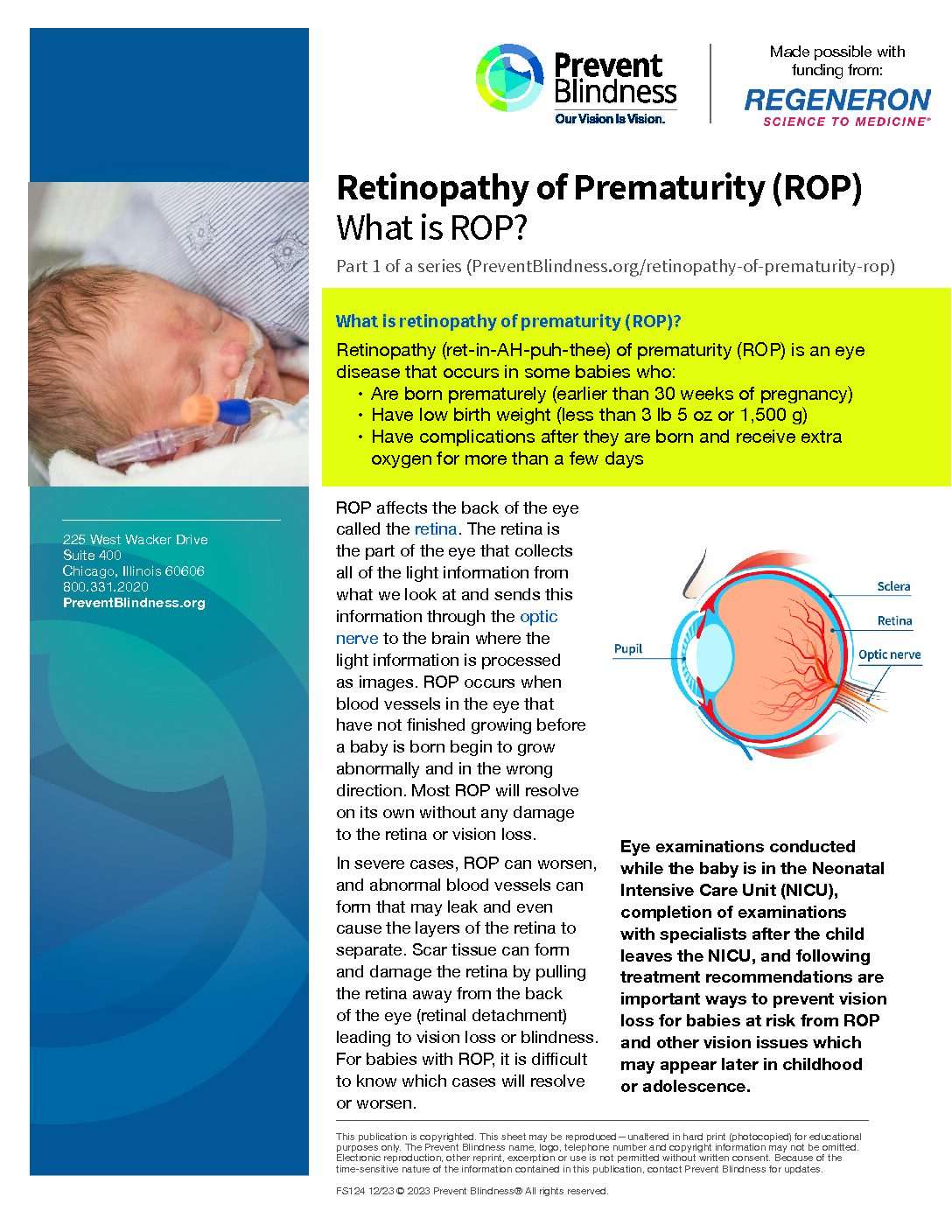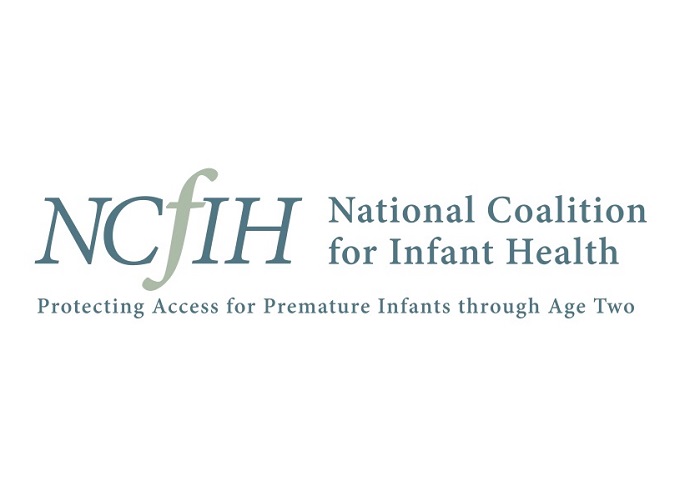What you need to know about Retinopathy of Prematurity (ROP) and your child’s lifelong vision health
Retinopathy of Prematurity (ROP) affects the back of the eye called the retina. The retina is the part of the eye that collects all of the light information from what we look at and sends this information through the optic nerve to the brain where the light information is processed as images.
ROP Resources at Prevent Blindness
ROP occurs when blood vessels in the eye that have not finished growing before a baby is born begin to grow abnormally and in the wrong direction. Most ROP will resolve on its own without any damage to the retina or vision loss. In severe cases, ROP can worsen, and abnormal blood vessels can form that may leak and even cause the layers of the retina to separate. Scar tissue can form and damage the retina by pulling the retina away from the back of the eye (retinal detachment) leading to vision loss or blindness. For babies with ROP, it is difficult to know which cases will resolve or worsen. Eye examinations conducted while the baby is in the Neonatal Intensive Care Unit (NICU), completion of examinations with specialists after the child leaves the NICU, and following treatment recommendations are important ways to prevent vision loss for babies at risk from ROP and other vision issues which may appear later in childhood or adolescence.
What follow up is needed for ROP?
All babies with ROP need be checked about every 1-3 weeks until the ophthalmologist determines the ROP has fully resolved and/or the retina has fully grown blood vessels. Then, the baby’s eyes can be checked less often. Some of these checks may happen after the baby goes home from the NICU. It is very important that you keep all scheduled follow-up appointments your doctor recommends. The earlier ROP is identified, the more helpful the treatment will be in preventing vision loss.
All children diagnosed with ROP, even if they didn’t need treatment, should continue to see an ophthalmologist regularly and follow all recommended appointments at least once a year, even into adulthood, to monitor for any other vision problems.
Will ROP affect my baby’s vision later in life?
All children diagnosed with ROP, whether or not they needed treatment for it, will have an increased risk for other vision problems as they get older, including:
- Myopia (my-OH-pee-uh): Commonly called near-sightedness, it means being able to see up close, but having difficulty seeing at a distance
- Amblyopia (am-blee-OH-pee-uh): Often called lazy eye, this condition is caused by poor vision in one eye and can lead to vision impairment or blindness if not treated
- Strabismus (struh-BIZ-muhs): Often called crossed eyes, this condition occurs when the eyes do not line up with each other, appearing to look up, down, or to the side rather than straight ahead
- Glaucoma (glaa-KOH-muh): Harm to the optic nerve which can cause vision loss
- Color vision problems: Difficulty seeing certain colors
- Retinal detachment: The retina pulls away from the back of the eye
Many of these vision problems can be treated with eyeglasses, eye drops, patching (sometimes wearing an eye patch), specialized prescribed devices, or eye surgery.
For babies with more serious ROP, early identification and treatment is the most important way to prevent vision problems later in life. While successful treatment can protect the center of the retina so the child has a better chance of seeing clearly directly in front of them, many will have some loss to their peripheral (side) vision (ability to see motion or objects outside the direct line of vision). Some babies with untreated ROP or retinal detachment might also experience symptoms such as:
- Nystagmus (ni-STAG-muhs): Eyes that make repetitive, uncontrolled movements (looks like “shaky” eyes)
- Leukocoria (loo-kuh-KAW-ree- uh): Pupils, the round opening of the eye that lets light through, that look white
- Not following objects with their eyes or responding to light
- Trouble recognizing faces
- Blindness
Fact Sheets to Download and Print
This information was developed in partnership with
and made possible with funding from:











